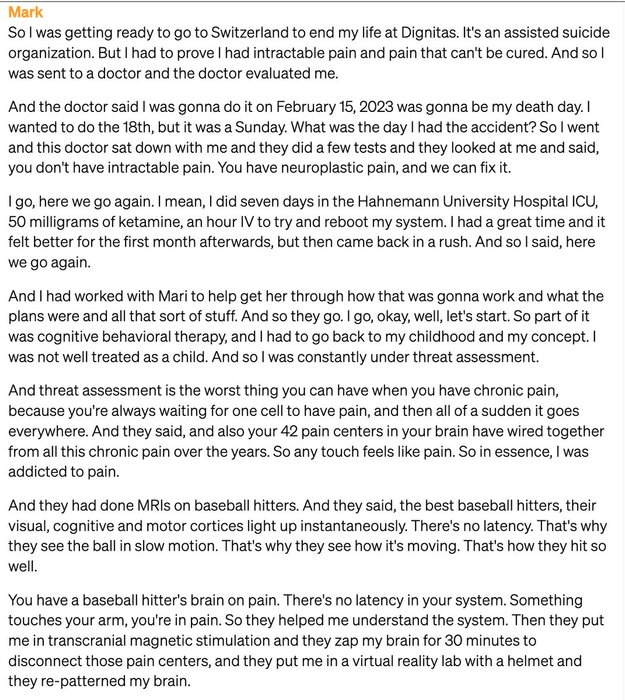Wired into Pain
The Way Out: A Revolutionary, Scientifically Proven Approach to Healing Chronic Pain
amazon.com

dude mark bertolini (ex- Aetna CEO, now Oscar CEO has an insane story
here he talks about how after his skiing injury, he was in so much pain for 17 years that he went to switzerland to end his life, and then was told he could fix his pain
went through neuroplasticity exercises and got it... See more
Pain is a real feeling, but that feeling does not necessarily reflect real damage in the body. Further, although pain depends on brain activity for its existence, this does not mean you can simply think pain away or that pain is your fault. Unfortunately, the processes which create pain are mostly unconscious and outside your control.